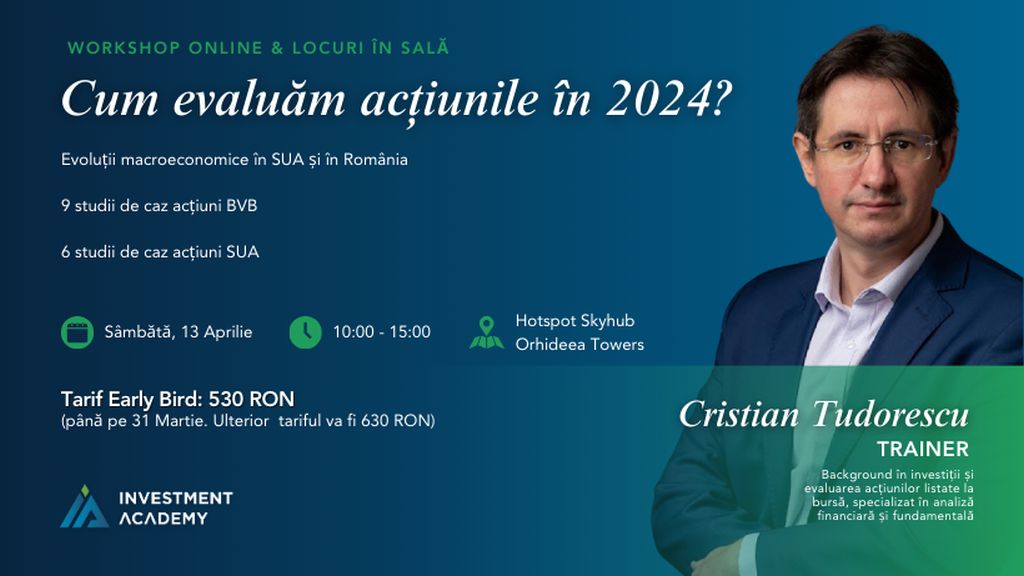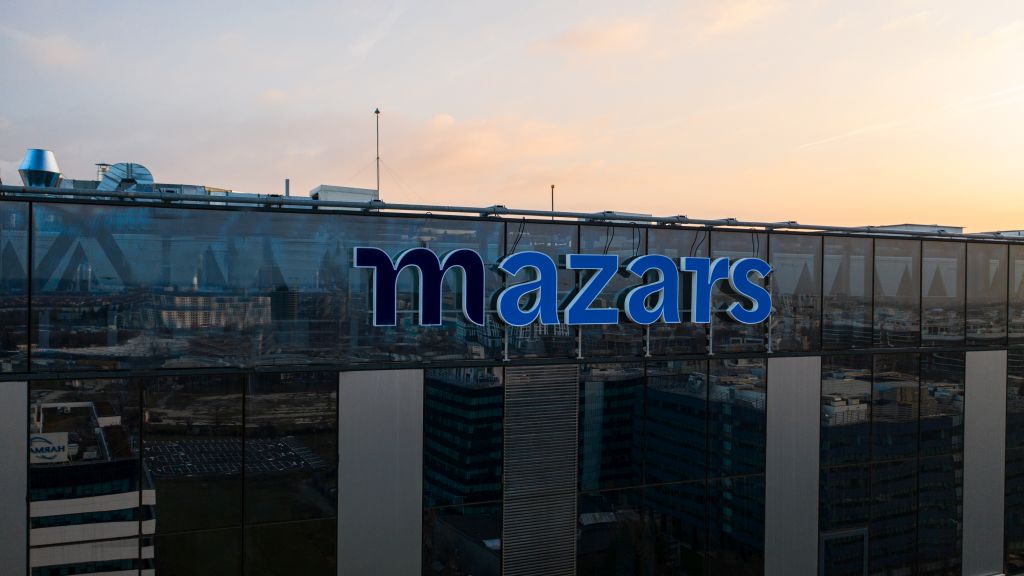Q: First of all, how was 2017 for SAS and how do you perceive the Romanian Market in terms of appetite for analytics, business intelligence and data management? For which of these do Romanian companies show more interest and why?
Daniel Pana: I would start answering your question from a broader discussion regarding Romanian market analytical development stage than addressing the 2017 appetite directly. In my opinion, there is a general pattern of Romanian development meaning that similar spread that we all can see between the large cities and rural area is applicable on analytical maturity of the IT market. Here are very advanced companies – majority within the financial sector, and beginners, but not many in between.
In terms of appetite, the most developed companies are served with a fix menu – ECB Regulatory, where the other are mostly business needs driven. To be precise, for the financial industry we have seen a lot of preoccupation with the space of GDPR, PSD II, BSCB 239 that translate, into Master Data Management, Data Quality, Data Lineage having the Business Intelligence just as normal part of the end to end solution plus some focus on the applied advanced analytics within the space of Anti Money Laundering and Fraud Management. The banking industry is further divided in two big segments: integrated and centralized institution, where the process is fully controlled from headquarters which are pushing almost everything to private clouds and are looking for standardization and the other that still acts and decides locally, which can be a bit more creative.
There are areas such as manufacturing and private health that have stepped into the Analytics through the Visual Data Discovery and Visual Statistics as they crave for actionable results in a timely manner. They are interested to understand their customers’ needs and behaviour and don’t have the time that traditional BI implies.
In other words, business intelligence became a commodity and the only actions that are generated on this topic are either improvement driven or the BI part comes embedded into a solution that either address compliance or the advance analytical need. Focus is on data management and advance analytics.
Q: As SAS states, ‘’analytics inspire action’’. What trends do you perceive in the Romanian Market in terms of actions inspired by analytics?
Daniel Pana: Inspiration, from an etymological point of view, we should read it “immediate influence of God or a god,” especially that under which the holy books were written, or another from Old French inspiration “inhaling, breathing in, inspiration”– and this is certainly true for Analytics. All companies that have been early adopters now are analytical centric, analytic is the “information god” and to continue with the analogy these companies start “breathing” analytics – they have changed their internal structure in order adapt to this new focus element – they have created analytical hubs, changed process to be capable to serve all internal clients they’ve, invented new roles e.g CDO (chef data officer, chef analytical officer) in order to comply with both internal need and the regulatory request. The result of these action is that now such companies are exceeding the borders of their own structured data, now these players are looking in collecting and analyzing unstructured data both from internal systems that have not been core so far e.g. customer complaints, recordings / transcripts from call center; emails or prospects online behaviour targeting to construct a new 3600 digital profile much more complete. In term of trends, simply the balance is in favour of those who will have better and more accurate customer and prospects profiles, for those that are capable of applying analytical optimization methods to their offers and marketing campaigns. To put it in a nutshell, analytics are becoming easily accessible to business users and empowering them to start and lead such a process, involving data scientists for more advanced topics.
Q: In 2016, Major Companies in Romania stated that 2017 will be the year when ‘’the highly improbable will become reality’’. SAS invites the business environment to ‘’experience your new possible’’. Can you detail a little bit what’s the ‘’new possible’’ in an economic environment where ‘’the highly improbable becomes reality’’?
Daniel Pana: The new possible is the art of being able to create scenarios (forecasts) and to run them (e.g stress tests) in real time, in order to be able to adjust yourself the highly improbable that becomes reality. This is the gain that a full integrated SAS platform can ultimately provide. Machine learning and AI on top of already existing data will unleash a deeper understanding of “new possible” as well as provide a faster decision flow. We, humans, are not very good at identifying patterns in large sets of data, and now we have “machines” (AI, algorithms, etc.), however we can find meanings and the means to put the results into action. And with all this technology, it has never been more interesting to find new haystack with “golden needles”.
Q: Arguably, the digital universe in doubling every 12 months worldwide. Is terms of digital universe dynamics what’s your view about Romania and what’s happening with the demand for analytics?
Daniel Pana: If you are referring to data being generated we have a similar trend, as for demand for analytical solution there is a slight difference, meaning the need is following the same growth but the projects or qualified request are far way behind. The reason for this situation is that analytics is still being perceived as the nice thing to do after you have your ERP or after you secure compliance with regulatory reporting or whatever other priority. As I said is a matter of Perception (from the Latin ”perceptio”) that is the organization, identification, and interpretation of sensory information in order to represent and understand the presented information, or the environment – which in my understanding is an analogue process. The point here is that it is by far easier to be born digital analytic than to transform into such a company.
Usually this process will start from one single point of the company and will evolve towards the entire infrastructure and this takes time an effort. There are very few visionary leaders who have the guts and the means to implement an analytical revolution.
Q: In the Romanian economy, in your view, how much of the available data is being ‘’analyzed’’?
a) less than 1%,
b) 1-10%
c) more than 10%.
What’s the potential?
Daniel Pana: If you are referring to structured data, probably l-10% of the data that companies acknowledge that they have - generally speaking, data is still being searched starting from an issue, a subject of interest and not holistic. Once we stop jumping to the end results and pay more attention to data and especially to data quality, we will be able to start with holistic data exploration which is going to give us more understanding of the untapped potential that we have.
This is not a revolutionary way, but still it is a very demanding one because is requesting stronger computation power, scalability, high availability, new internal processes and, none of the less, people with skills in this field. Above all, there is one additional change that has to occur: data is not the “property” of IT – data is the responsibility of business users, these are the one who should be capable of looking holistic to the company data.
These are the reasons that in my opinion new regulation such as GDPR should be perceived as golden opportunities for the analytical revolution, and here is my advice to all those who are the new CDO – look at your data as you are looking to your children, GDPR is not only for building fences around data but GDPR is about you having a holistic view and understanding data and how to use it in an advanced analytic way - it is like my fatherhood everyday - explaining to my kids for example why they should be accountable and respect the social rules when everybody else is braking them, and the bigger the deviation the larger the social visibility and impact.
Q: Probably the highest visible crisis in Romania NOW is related to the workforce scarcity that adds to a high competition between companies. How do you see this and what are SAS solutions for turning this deficit into efficiency?
Daniel Pana: Yes, this is a very hot topic of our days - we are in a steep negative demographic trend, in a very short time, we will probably have as many active people abroad as there are now in Romania. SAS can help companies in being more accurate in their offering, prolonging their relationship with client (reducing churn), managing their risks better, stop overlooking their internal or procurement fraud, on–line, better forecast their demands or production, model their process, as long as there is enough data and history. All of these can be achieved with fewer people but better qualified ones. Change has been, and still is the only constant, therefore people need to be keen on learning and reinventing their jobs and roles on a daily basis.
This is the key idea in order to overcome the workforce scarcity and uncovering new opportunities.
Q: There is a growing demand for data analytics, for sure. In a tight competition for the local workforce does Romania now has enough people to analyse that data your solutions are producing? Do you think that Romania may have a shortfall of people able to analyse data in a few years? What’s the solution for this?
Daniel Pana: Romania has a growing need for experts in data analytics, as each at least 20 job offers are published online each day by companies operating in telecommunications, banking, HR, retail, marketing, IT&C, or pharmaceuticals. Although trivial, the solutions are in education, not only in Universities, but in high-schools too. A key intervention is to bring together businesses, academia and SAS Institute (SAS Romania) into a systematic set of actions focused on three main areas:
- to support teachers to master SAS solutions in order to develop the educational programs with greater applicability, within joined projects with businesses looking for new solutions to cope with their objectives;
- to enable future graduates to put into practice their skills and knowledge in a real working environment through internships that could help their progressive evolvement during the school years;
- to strengthen the capability of SAS Romania to advocate the urge of developing the education in data analytics, encompassing collaborative actions regarding the reluctance to study mathematics or statistics, motivation for companies, universities, teachers and students to invest in this educational area or advantages of SAS compared to other solutions.
Q: What’s your view on employment and investment for Romania in 2018 and please give us your view about the evolution of your business sector?
Daniel Pana: We expect to have a much more expensive market in 2018, the cost for senior resource will be almost the same for Romania as with any EU country, the difference will be made just by the juniors who are still going to be comparatively less expensive. The scarcity of the highly qualified people is not going to improve and here, I must add that there is not enough interest from the big companies in investing in programmatic formation of new specialist. I must underline the “programmatic” factor because, generally speaking, companies are investing in training.
Investment, I will address this topic from the point of view of share of wallet that analytics will get in 2018. In our view, 2018 should be the year when investment in analytics will be at their correct proportion due to the fact that there are very few topics that can be considered of our scope now, and no new initiative can be considered as relevant or complete unless analytics is part of it.
Q: If you were to go back almost 20 years, What would be your statement on ‘’Romania - then and now’’ not only from big data and analytics point of view.
Daniel Pana: Fabulous opportunity. Romania has been and still is an excellent candidate for revolution. We had and still have (and this is not for the glory) the chance of achieving huge technological and structural jumps as there is not much to replace – our need is similar to all the more developed countries, but our heritage is less, therefore we should have less difficulties in deciding for major replacements / improvements.






























